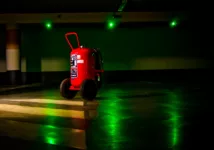Home fires are so rare you probably never think about whether your fire extinguisher will work when you need it to. You may not even remember whether you even have one. But here’s a subject worth your attention for a few minutes. It could save a life, save a house, or save you the embarrassment of looking like an idiot.
If you run a business, chances are you have a requirement to keep a working fire extinguisher on the premises and equally likely that it must be inspected regularly. What do they do when they inspect this piece of equipment?
What type of fire extinguisher do you have?
Not surprisingly, there are several types of fire extinguishers, depending upon the type of fire it is designed to put out. So, before we can talk about types of fire extinguishers, we have to say a few words about types of fires.
This is important. You can’t just turn a garden hose on any fire that starts up on your property. Using the wrong extinguisher on the wrong type of fire not only won’t work, it could cause the fire to spread and possibly injure or kill you.
There are five classes of fires labelled A, B, C, D and (surprise!) K. Class A is for common flammable materials like paper, wood, cloth, and plastics. Water will put these out handily.
Class B stands for flammable liquids like gas, oil, paint and gasses like propane and butane. Water won’t work on these. The most effective way is smother them with something that keeps oxygen away like a foam fire extinguisher.
Class C fires are associated with electrical equipment like motors, appliances, and transformers. Spray water on these and you may electrocute yourself!
Class D fires are from flammable metals like magnesium, aluminum, potassium, and sodium. They tend to burn very, very hot and make pretty colors.
Class K stands for “Kitchen” and should be the easiest to remember. Even though you will find wood, paper, plastic and flammable garbage in any kitchen, this category refers specifically to fats like cooking oil and bacon grease. Why not include this with Class B? Kitchen fats tend to splatter when hit with water – the first thing you may have access to when your stovetop catches fire – and spread to ignite other non-oil-based flammables.
So, you will have an extinguisher that is certified for certain types of fires. Just look at the letters on the side.
What to inspect
There are eight types of fire extinguishers (water and foam, CO2, dry chemical, wet chemical, clean agent, dry powder, water mist and cartridge-operated dry chemical.) Safety laws are similar for all 50 states, so we checked with Florida to see what is included in annual fire extinguisher inspections. In brief, All Florida Fire Equipment checks to be sure the extinguisher is completely pressurized, damage-free, and appropriately weighted. They’ll test the pull pin and verify the seal replacement inspection tag. If any of these points of performance fail, you have to replace the extinguisher or get it recharged.








